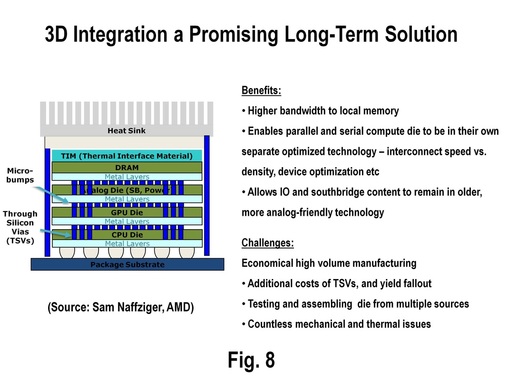Fusion for Next-Generation Consoles?
X-bit labs: What do you think about next-gen consoles and GPGPU? For example, Nvidia believes into its ARM-based SoCs, Intel is working onto x86-based offerings...
Neal Robison: I think a Fusion-based system makes a huge amount of sense for next-generation consoles. If you are looking at a system that can provide a great deal of horsepower, the Fusion architecture certainly makes sense. With the processing power on its CPU in addition to just general graphics performance, I think it is really interesting because it gives a bit of headroom... In a typical console lifecycle you basically try to take advantage of the chipset as best you can at the introduction and over the lifecycle of the product, developers tend to refine and tweak [their titles] in order to take advantage of more power. I think that [cycle] would happen as you see a very good balance between the GPU core and CPU core. [...] It makes a lot of sense for the next-generation consoles.
X-bit labs: Traditionally, game consoles used custom processors based on various micro-architectures, most recently Power, MIPS, Cell (heterogeneous multi-core Power, if you wish), not x86.
Neal Robison: The original Microsoft Xbox did use x86 and the Xbox has proven that there is great performance to be had with the x86 architecture. [Everything] comes down to tools, again. That is what the most important aspects of it. As well as being able to really harness the processing power of all the chips involved. Look at the PlayStation 3. I think they thought that the Cell processor was going to be everything that they would need and that it would handle both the traditional CPU tasks and the GPU tasks. It turned out that it simply did not have the horsepower necessary for GPU tasks. So, they actually added a GPU to the system quite late in the design of the entire console. I think there is an opportunity for a very good well-balanced multi-core processor arrangement inside the next-generation consoles.
X-bit labs: Current generation consoles already use multi-core microprocessors. PS3 even uses heterogeneous multi-core microprocessor. Maybe you foresee a console with a heterogeneous multi-core CPU with some high-speed stream processor inside along with a discrete graphics chips with fixed-function hardware, etc.? Or you insist that Fusion can be scaled up so high that its CPU and GPU will be able to handle next-generation games at more or less high, but not extreme cost?
Neal Robison: Definitely. I see the Fusion architecture as capable of scaling both up and down. We’ve already talked in the past about the role of the Fusion architecture in areas such as server, and we think that our architecture is strong enough to be able to scale to many different usage scenarios.



